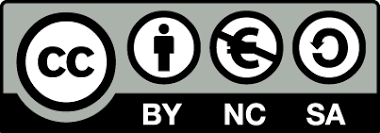Abstract
The Universal Coverage Benefit Package (UCBP) is a key mechanism that supports
equitable and comprehensive access to essential health services for all Thai citizens. The
National Health Security Office (NHSO), in collaboration with the Health Intervention and
Technology Assessment Program Foundation (HITAP), oversees the UCBP process,
encompassing topic nomination, prioritization, research, and policy development. This process
adheres to principles of systematic processes, transparency, stakeholder participation, and
evidence-informed decision-making. This study was a rapid review to support the
consideration of additions or revisions to the benefit package under the universal coverage
scheme (by focusing on three proposed topics). The review focused on clinical effectiveness,
safety, and budget estimation for three proposed interventions submitted to the UCBP cycle
in 2025 that included: topic 1 on screening and diagnosis of hepatitis C virus (HCV) infection
using the HCV duo test; topic 2 on expansion of benefits for blood glucose test strips for
patients with type 2 diabetes (T2DM); and topic 3 on home-used pulse oximeter (PO) for
patients with cyanotic congenital heart disease (CCHD).
The results of the rapid reviews found that the HCV duo test (topic 1) is a highly
accurate screening tool capable of simultaneously detecting both antibodies and antigens to
HCV, thereby reducing the problem of individuals not returning for confirmatory testing under
the current screening protocol. While the adoption of the HCV duo test as a one-stop testing
strategy would entail higher budgetary expenditure compared to the existing approach, it
offers the potential to improve the identification of individuals with chronic HCV infection and
facilitate timely linkage to treatment. In the long term, this could contribute to reducing
overall healthcare costs, particularly in populations with a high prevalence of HCV infection.
For the expansion of benefits for blood glucose test strips for patients with T2DM who cannot
control their blood sugar levels with HbA1c more than or equal to 7 percent (topic 2), the
review found that regular and structured self-monitoring of blood glucose (SMBG) can
significantly reduce HbA1c levels, especially when combined with behavior modification. It
also has a positive impact on reducing the long-term financial burden related to T2DM of the
healthcare system. For the home-use PO for patients with CCHD (topic 3), although portable
PO devices played an important role in remote care during the COVID-19 pandemic, the review
found limitations in terms of PO’s accuracy for patients with low oxygen levels, the lack of
clear usage guidelines, and challenges with patient retention in ongoing monitoring and care
systems. Therefore, the consultations with stakeholders recommended developing an
integrated care system for CCHD patients instead of solely distributing the PO devices. The
findings from these three topics have been used to support the policy decision-making of the
NHSO, in consideration with data on effectiveness, safety, budget estimation, and the
feasibility within the context of the Thai healthcare system, to ensure that the addition or
revision of benefit items under the UCBP brings the greatest benefit to the Thai population.


